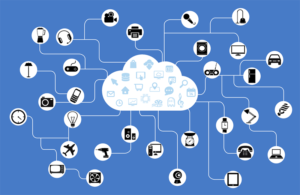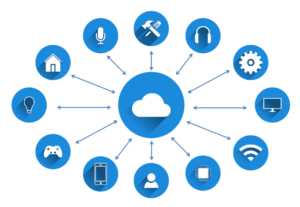In the early days of personal computing, handling your information was straight forward – you (or your family) had one computer over which you had total control. In two short decades, however, personal computing has expanded in ways that were previously unimaginable. Here are four areas of extreme IT growth which create new concerns for small businesses.
Hardware
Most individuals and businesses rely on multiple computing machines: PC, smartphone and/or tablet. Add in wearable devices (fitness, health monitoring) and “smart” appliances (home automation, security), and the time and knowledge required to manage it all almost exceeds the capacity of one person. Compatibility issues and maintenance requirements expand with each additional technology an organization adopts. Adding new hardware without thorough investigation and a detailed plan invites more problems than it solves.
Data Capacity
With the diversity of computing platforms today comes the need for increased data storage. High res photos, music, and videos all take up more room that the simple text files of yesteryear. Memory cards for phones and digital cameras have grown from 128mb (100 low res photos) to 128gb (32,000 songs, 27 DVD movies or 250,000 high res photos). Adding storage capacity has become easier thanks to lower costs and USB technology. However, there are other considerations such as data backups and faster network speeds for moving bigger files.
Information Sharing
One of the benefits of using multiple devices is the ability to access your data from all of them. Email, contact lists, bookmarks, and documents should be available on your computer, phone, and tablet without having to keep separate copies of everything on each device. Cloud-based services (OneDrive, Google Drive, Dropbox, iCloud) make this practical but also introduce another layer of IT issues. Unique passwords, data security and backup, and internet access are some things that must be considered when implementing a cloud technology.
Social Networks
 Because of developments in personal computing, people can connect with each other in more different ways than has ever been possible before. Email, social platforms (Facebook, Twitter, Instagram), collaboration suites (G Suite, Office 365, GoToMeeting) and dating sites offer opportunities to work and play with someone you may have never met in person. Each of these tools, however, may have its own pitfalls. Unauthorized use of your data, lack of functionality, and forced changes are all valid reasons to be careful when using social networks.
Because of developments in personal computing, people can connect with each other in more different ways than has ever been possible before. Email, social platforms (Facebook, Twitter, Instagram), collaboration suites (G Suite, Office 365, GoToMeeting) and dating sites offer opportunities to work and play with someone you may have never met in person. Each of these tools, however, may have its own pitfalls. Unauthorized use of your data, lack of functionality, and forced changes are all valid reasons to be careful when using social networks.
Rather than go it alone in the ever changing world of information technology, why not add a well-rounded, experienced IT expert to your team? Let TechFit be your guide!


